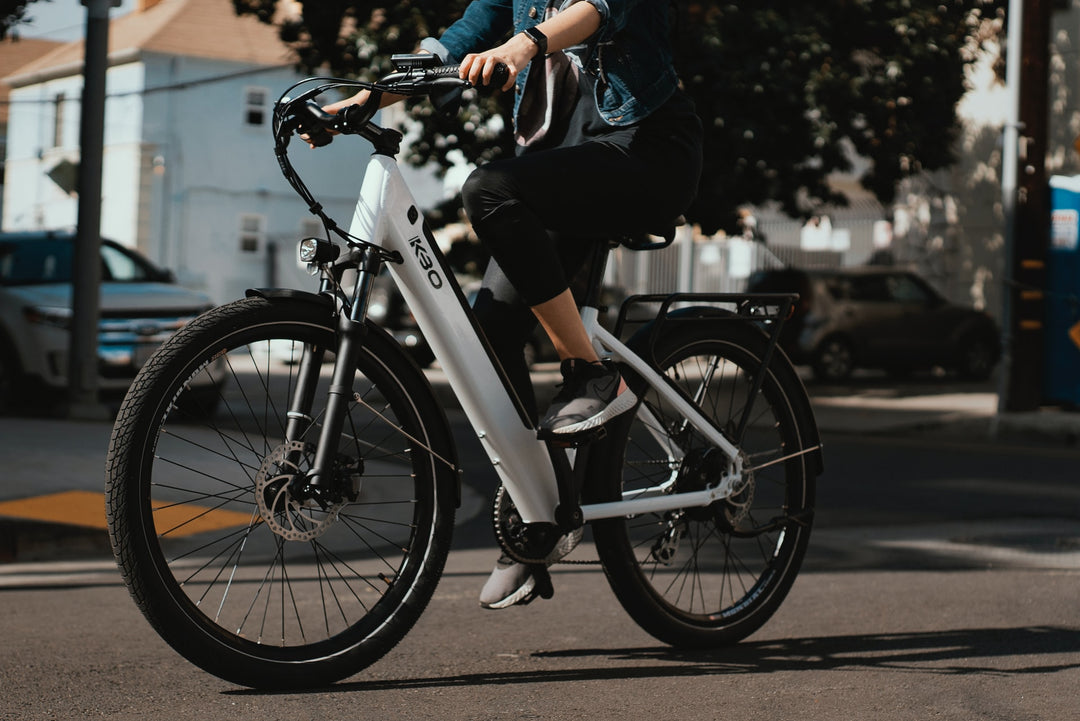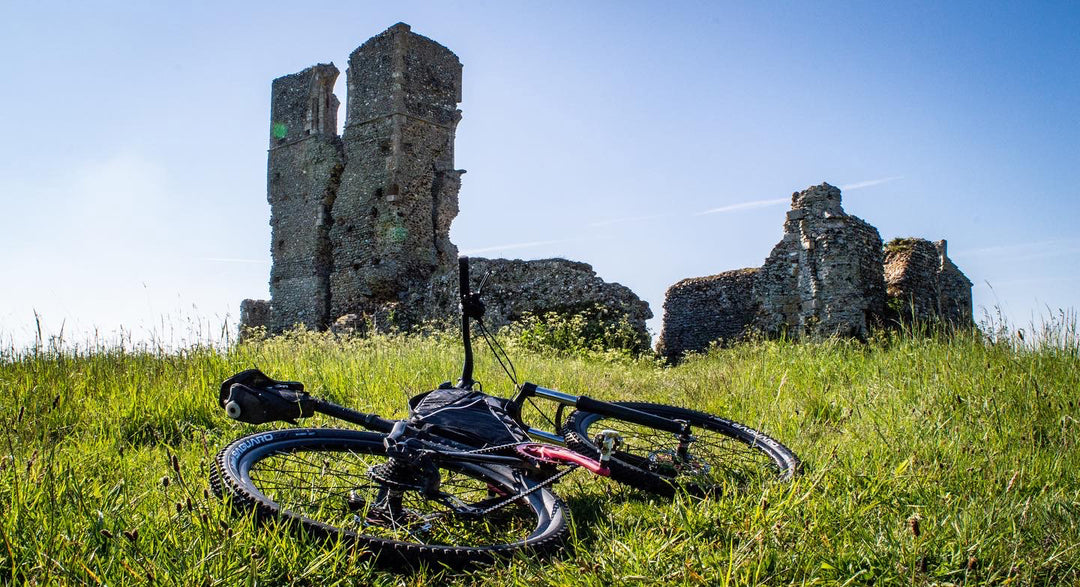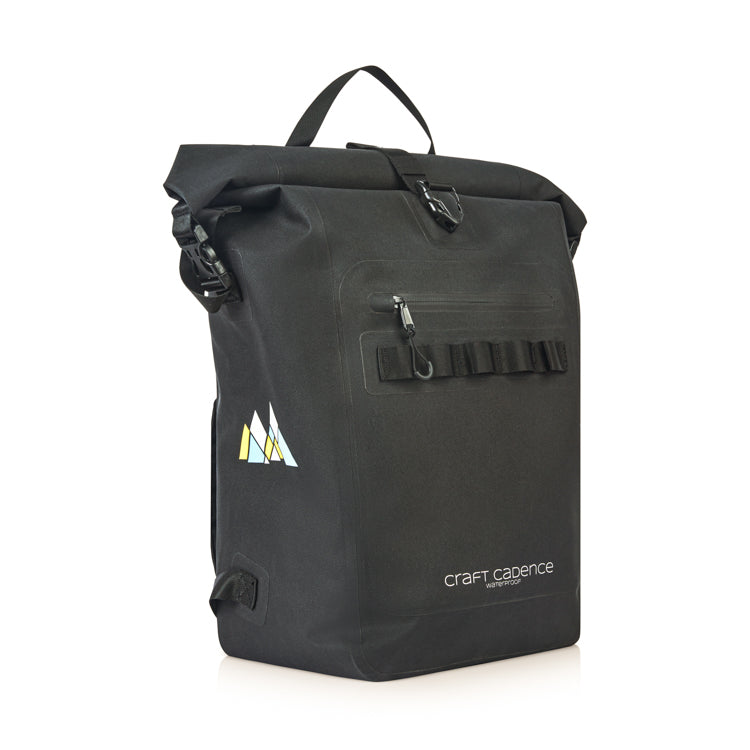A Local's Guide to London's Cycle Superhighway - CS6
Cover Photo Credit: Steve
Craft Cadence is a UK based cycling bags and pollution masks brand that helps commuters stay organised and breath clean air. This is part of series of blogposts covering London's cycle superhighways, from a commuter's perspective. Feel free to comment on your experience of using this superhighway - do keep things civil though!
History
Cycle Superhighway 6, also known as the North-South Superhighway, is a fully segregated cycle route connecting both sides of the capital. This route was 1 of 12 cycle superhighways promised by Boris Johnson in the London Mayor’s ‘Vision for Cycling’ in 2013, with a combined costs of over £900 million.
The first section of the route, between Elephant and Castle and Stonecutter Street, opened in spring 2016, and was heralded as ‘Crossrail for bikes’ (Crossrail is London’s new high-speed rail service). Despite these plaudits, the project was not without controversy; as late as 2015, amid concerns from taxi drivers over causing further congestion, it appeared the project wouldn't go ahead. However, TfL learnt lessons from previous schemes, communicating the route would benefit not just cyclists; Pedestrians would gain 1,600sq/m of footway along the route, as well as 14 new or upgraded pedestrian crossings. Importantly, businesses began supporting the project, as the scheme would provide a nicer environment, increased trade and allow staff to cycle or walk to work. After a business survey in 2016, with unanimous support, the scheme was commissioned.
Works to extend the route to King's Cross in the north will take place between November 2017 and summer 2018. There, the route will connect with the planned Quietway 2, a cycle route through Hackney, Walthamstow, Camden and Swiss Cottage. Importantly, the scheme is consulting The Royal National Institute for Blindness (RNIB) around concerns about the safety of visually impaired staff and visitors visiting its HQ. TfL must ensure the route’s passage along Judd Street does not endanger vulnerable pedestrians.
Cycling Guide
The route starts in the South, at Elephant and Castle roundabout. The areas name can be traced back to it being the location of a blacksmiths and cutlers; the coat of arms of the Worshipful Company of Cutlers (One of London’s 110 ancient Guilds) features an elephant with a castle, which the cutlers proudly displayed. Later, from the 18th century the building was used as a Coaching Inn, but kept its tradition, being dubbed ‘The Elephant’ . This popular inn was even mentioned in Shakespeare’s "Twelfth Night".
CS6 starts at St Georges Road, off the roundabout which directly connects CS6 to CS7 (a route from Merton to Cannon Street via Southwark Bridge).A light controlled junction allows cyclists to cross to the right of the road, which accommodates the bi-directional segregated lane. The route stays straight for 500m up to the gate of St George’s Cathedral, built in the 19th century. The lane splits at this point - straight on connects onto the main road, while the right lane is CS6, which takes you past the cathedral entrance. This quickly leads to a give way line; you need to cross both sides of the road and continue right down Lambeth road. As you cross, pay attention to the buses that park on this roads and can quickly pull out.
The end of this section, there is a pedestrian crossing, proceeded by a two stage controlled crossing to the left. Follow this crossing, as it filters cyclists onto the segregated bi-directional cycle lane along Blackfriars Bridge Road. This is where the route starts to get busy, with cyclists joining from
Webber Street, connecting Quietway 1. That said, the cycle lane widens out to accommodate the influx, and it is here that you can almost go into autopilot; CS6 stays straight all the way up to and over Blackfriars Bridge while every major and minor junction is light controlled allowing cyclists to wait their turn and go across in safety. This section would be at home in Copenhagen or Amsterdam. If you are in need of a repair, take a detour by turning left at The Cut, to The London Bicycle Repair Shop, who have been helping commuters since 1999.
Iron security barriers are recent additions at the Blackfriars Bridge entrance, which require a moment of concentration to negotiate. While you go over the bridge, see if you can spot any Southbank Mosaics which are dotted across this area by the London School of Mosaic.
Crossing over to the North side of the bridge, there is another set of security barriers and lights. The route then kinks right and downhill. Feather the breaks on this descent, as cyclist ahead may turn left or right to connect onto the East-West Cycle Superhighway. CS6 continuities straight following Farringdon Street, albeit with noticeable reduction in width. This takes you past City Thameslink station, and as far as Stonecutter Street, where the route abruptly stops. At this point cyclists are filtered back onto Farringdon Street, mixing it with vehicles. To your left you will see The Hoops and Grapes pub, which is famous for being a timber framed survivor of the Great Fire of London in 1666 - stopping just 50 yards from the building! This is where the next section of the route will be build, continuing up Farringdon Street, and then talking quiet streets up towards Kings Cross.
Review
CS6 has certainly attracted greater media attention that any other cycle superhighway, to the point of it almost not being constructed. Pleasingly, since phase 1’s official opening in April 2016, it has proven to be a success; TfL’s latest results show on Blackfriars Bridge cyclist numbers have increased by 55%, while 70% of all vehicles on the bridge are now cyclists at the busiest times. These are significant results, and proof of a demand for high quality segregated cycle lanes in the capital.
This projects success is down to three factors: 1.Connectivity; the route connects to a number of other key cycle routes, joining up London’s cycle network. 2. Quality; the route is built to, and exceeds, the current design guides for cycle infrastructure. Indeed, the section south of Blackfriars Bridge, scored 86 on the Cycling Level of Service (CLOS) – an assessment tool for cycle schemes – which got lots of experts very excited. While some segments are annoying narrow, overall the route feel the safest and easiest of all in London. 3. Befitting all users; cycling along CS6, you cannot help but notice the quality finish to the street scape, from nice brickwork, plentiful planting or increased seating provision. Combined with the additional crossing points, it’s not hard to see why pedestrians have been in favour of the scheme too.
CS6 has learnt from all other previous schemes – TfL now knows only fully segregated lanes will do for central London, they all must link up, and a consultation needs to find ways to support not just cyclists, but pedestrians and vulnerable road users too. Once complete, these learnings will make CS6 London’s flagship scheme. By that time, other learnings from it will help inform newer, improved, innovative routes in the capital.



